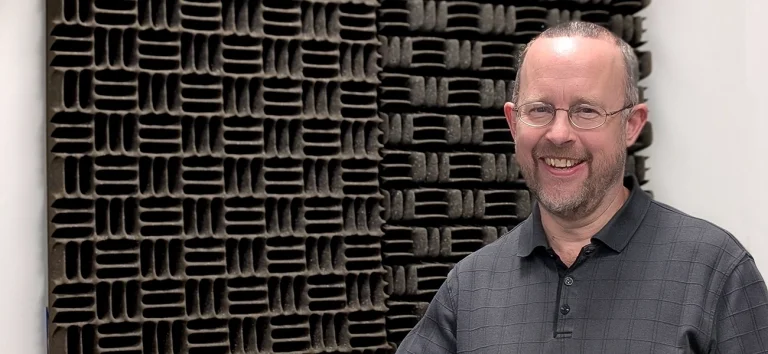This is the story of how one engineer’s trained ears are shaping Nissan’s next generation of in-vehicle sound. Patrick Dennis is a good listener. In fact, he has built a career on his ears. Countless hours of listening to music in cars, homes and concert halls have enabled him to precisely tune automotive speakers. His official title is principal engineer for audio sound quality, but around the office, he’s simply “Golden Ears.”
Dennis has spent nearly 20 years at Nissan technical center in North America, helping to shape the sound of Nissan vehicles across the line-up. He also lends his tuning expertise to select Infiniti models. At the R&D facility near Detroit, Michigan, the audio team is dedicated to making sound systems the best they can be.
“It’s not that my ears are naturally better than anyone else’s; it’s that I’ve been trained to identify certain things in the music that other people might not be able to catch,” he says. After two decades, the best part of the job is the moment he realizes the team has achieved the desired tuning. “You have to work with the system to get it to pop,” Dennis says. “When it does, you know it, you feel that the fun factor immediately. And you can’t wait for the customer to experience it too.”
A concert-like sound
“We want the customers to feel like they’re at a live show. That’s the vision,” Dennis explains. “We want to transport them there.”
Providing a high-quality listening experience in an environment with many other noises comes with challenges. “A car is not an ideal space for an audio system. You’re competing with noise from the powertrain, road, wind and surrounding traffic,” he says.
As well as this, car speakers are often mounted away from a passenger’s ears – for example, low in the doors. To tackle this, Nissan has used technology that enables the audio teams to precisely direct the music so it feels closer to the listener.
“We can now manipulate sound to give it the best quality possible, even with just a few speakers,” Dennis says. An example of this is the use of the Bose personal plus audio system in the Nissan Kicks, where speakers are mounted in the headrests to enable an immersive experience.
Software also plays a role in reducing external noise. For example, active sound management uses an interior microphone to identify low-frequency engine sounds and neutralize them with sound waves of the opposite frequency. This works similarly to noise-canceling headphones.
Brand partnerships
Partners such as Bose, Fender and Klipsch work closely with Nissan throughout the vehicle-development process, positioning speakers and adjusting them for metrics like treble, bass and clarity, to create an optimal listening experience. Engineers monitor the sound with equipment and their ears, making small tweaks until the sound is just right. Dennis notes that a larger speaker count is what makes the biggest difference when it comes to audio experience.
Nissan audio engineers are currently collaborating with brands on systems that will debut in model year 2028 and beyond, including next-gen EVs and future flagship SUVs. By joining early in development, Dennis and his team fine-tune the sound system for each vehicle’s unique interior.
This is an edited version of an article that first appeared on Nissan Stories USA.
In related news, BMW has recently revealed its rolling testbed vehicle for drivetrain and dynamics management technology developed for the Neue Klasse, stating that the next-gen vehicles’ Heart of Joy central computer works 10 times faster than conventional systems.


